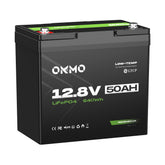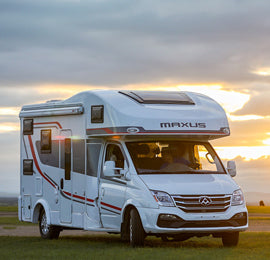Can You Use a Car Battery on a Boat? Unveiling Critical Differences Between Automotive and Marine Power Sources

When boat owners face sudden battery failures, using car batteries as temporary replacements often seems tempting. However, this seemingly convenient solution carries systemic risks. We analyze four core metrics to reveal fundamental differences between these battery types.
I. Structural DNA Differences
-
Plate Thickness & Discharge Characteristics
Automotive SLI batteries use 0.8-1.2mm thin plates optimized for instant 500-800 CCA (Cold Cranking Amps) bursts. Marine deep-cycle batteries employ 2.5-3.5mm thick plates to maintain 80% capacity under 20-hour rate discharges. -
Vibration Resistance
Marine batteries meet MIL-STD-810G vibration standards with dual epoxy-resin immobilization, offering 40% more shock protection than automotive units. Typical marine batteries withstand 10Hz-2000Hz random vibration vs. automotive's 30Hz-300Hz road vibration tolerance. -
Corrosion Protection
Saltwater corrosion occurs 8x faster than inland environments. Premium marine batteries use ASA+PC composite cases (e.g., Optima BlueTop) with 15μm terminal coatings versus automotive's standard 5μm.
II. Performance Chasm
-
Cycle Life Comparison
Automotive batteries achieve <50 cycles at 80% Depth of Discharge (DoD), while marine deep-cycle models (e.g., Lifeline GPL-3100) deliver 1,200 cycles at 50% DoD. -
Self-Discharge Rates
Marine AGM batteries show ≤3% monthly self-discharge vs. 15-20% in automotive batteries. This allows marine batteries to retain charge for 6 months during winter layups, versus 3 months for automotive units. -
Charge Acceptance
Marine dual-battery systems with smart charging (Blue Sea Systems m-Series) achieve 22% higher efficiency at 14.4V. Automotive batteries suffer accelerated plate sulfation at marine systems' typical 14.8V charging.

III. Quantified Safety Risks
US Coast Guard data shows 23% of boat fires originate from battery failures. Automotive battery substitution creates three key hazards:
-
Electrolyte Leakage
Automotive batteries leak at 45° tilt vs. marine batteries passing UL 1642 55°/4hr test. In Beaufort Scale 3 seas (30° rolling), automotive leakage risk increases 500%. -
Hydrogen Accumulation
In enclosed spaces, automotive batteries can produce 4% H₂ concentration (explosion threshold: 4.1%). Marine VRLA batteries emit 1/20th the hydrogen of conventional units. -
Circuit Protection Deficits
ABYC E-11 compliance requires 300A magnetic circuit breakers. Automotive batteries risk surge currents damaging $2,000+ sonar/GPS systems.
IV. Emergency Protocols & Long-Term Solutions
Under emergency conditions, follow the "3-Hour 50% Rule" for temporary automotive battery use:
-
Engine starts only (≤5 seconds/attempt)
-
Disable 120V AC appliances
-
Monitor temperature every 30 minutes (discontinue if >50℃/122℉)
For permanent solutions, implement professional marine systems:
├─ Managed via ACR (Automatic Charging Relay)
└─ Monitored with Victron BMV-712
This configuration extends battery life to 8-10 years, achieving 62% cost savings versus automotive battery replacements.
V. Decision Matrix
-
Usage Assessment
-
Offshore navigation? → ABYC-certified batteries required
-
Total electronics >500W? → Mandatory deep-cycle bank
-
-
Technical Specifications
-
MCA (Marine Cranking Amps) > Engine requirement x1.3
-
RC (Reserve Capacity) > Max voyage duration x1.5
-
-
TCO Analysis
Compare Total Cost of Ownership:
vs
Automotive TCO = (Frequent Replacement) + (Equipment Damage Risks)
Emerging Technologies
LiFePO4 marine batteries now offer:
-
60% weight reduction (Dakota Lithium 100Ah: 13.6kg)
-
100% DoD capability
-
Integrated self-heating (-20℃/-4℉ operation)
Although 3x more expensive initially, they reduce 10-year costs by 45%.
 Conclusion
Conclusion
Using automotive batteries as marine power sources equates to installing a "land-based heart" in your vessel - sustaining basic functions temporarily while risking systemic failure. Understanding these technical divergences and adopting ocean-optimized energy solutions remains the only rational approach to ensure maritime safety and operational economy.









